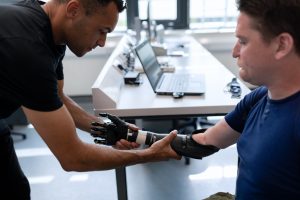New Citations | Rehabilitating the Rehab Industry & More!
 BIOPAC provides software and hardware that allows engineers to study the body. Here are a few notable studies using BIOPAC equipment for Biomedical Engineering research.
BIOPAC provides software and hardware that allows engineers to study the body. Here are a few notable studies using BIOPAC equipment for Biomedical Engineering research.
Rehabilitating the Rehab Industry
Could physical therapy be done from the comforts of your own home? If possible, this would open the door for more people with all sorts of ailments to receive treatment worldwide. Using an MP36 Data Acquisition System, the researchers aimed to create a device that would allow physiotherapists to collect real time physiology data from patients during a rehabilitation exercise in order to adjust treatment as needed. Read the full study: Developing a Low-cost, smart, handheld electromyography biofeedback system for telerehabilitation with Clinical Evaluation (Mazen M.Yassin, Abubakr M.Saber, Mohamed N.Saad, Ashraf M.Said, Ayman M.Khalifa)
Supporting Stand Up Surgeons
Could wearing a supportive device reduce physical stress on surgeons? Could benefits not only be given to the surgeon but passed onto the patient as well? By incorporating the two channel, wireless EMG BioNomadix amplifier, this study was able to measure EMG signals for muscle fatigue while surgeons were both wearing and not wearing the supportive device during surgery. Read the full study: A wearable lower extremity support for laparoscopic surgeons: A pilot study (Hiroshi Kawahira, Ryoichi Nakamura, Yoshihiro Shimomura, Takashi Oshiro, Shinichi Okazumi, Alan K. Lefor)
Getting a Grip on the Effects of Mental Effort
In theory, if you are expecting something to happen you should be able to react quicker and achieve better results than if you were not. Can this be scientifically proven though? EMG signals were recorded on a BIOPAC Data Acquisition Unit to measure if participants who could anticipate the task performed better. Read the full study: Effects of Mental Effort on Premotor Muscle Activity and Maximal Grip Force (Yosra Saidane, Ross Parry, Chama Belkhiria, Sofia Ben Jebara, Tarak Driss, Giovanni de Marco)
Stay Connected